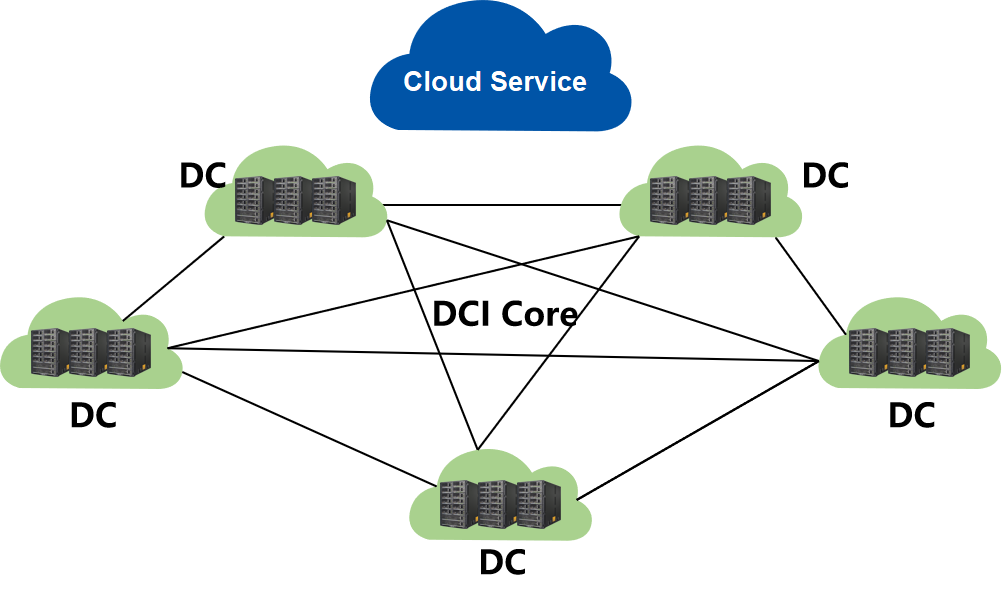How Is Photonic Computing Powering the Future of Data Center Interconnects?
2025-10-11
In a world increasingly driven by data, the question of how to sustain the performance, scalability, and efficiency of data centers has become critical. As artificial intelligence, cloud computing, and the Internet of Things (IoT) continue to generate unprecedented traffic, traditional electrical interconnects are reaching their physical and economic limits. Bandwidth bottlenecks, latency constraints, and high energy consumption are now major obstacles for modern digital infrastructure.
So, how can we overcome these challenges and unlock the next level of data center performance? The answer lies in photonic computing—the revolutionary use of light, rather than electrons, to perform computation and data transmission. Together with optical interconnects, photonic computing is emerging as the core engine that powers the evolution of hyperscale and AI-driven data centers.
Data centers form the foundation of today’s digital world, supporting everything from video streaming to real-time AI training. Yet, as data rates continue to surge past 400 Gbps and beyond, electrical interconnects are hitting hard physical barriers. Copper cabling suffers from signal attenuation, electromagnetic interference, and excessive power consumption—making it increasingly inefficient over longer distances.
As server clusters expand and workloads become more distributed, maintaining low-latency and high-bandwidth communication with traditional electrical signaling is both technically and economically challenging. The shift toward optical interconnects is therefore not just a technological upgrade—it is a strategic necessity for the future of data center design.

Photonic computing goes far beyond simply transmitting data through optical fibers. It represents a paradigm shift in the way computation is performed. By manipulating photons instead of electrons, photonic circuits achieve ultrafast data processing with minimal energy loss.
Light travels faster and generates less heat than electrical signals, allowing for denser integration and reduced cooling requirements—two critical advantages for large-scale data centers. Core photonic components such as optical modulators, photodetectors, waveguides, and switches are now being developed using silicon photonics, which combines optical and electronic functionality on a single chip.
This integration enables the creation of photonic accelerators that offload heavy computational tasks from CPUs and GPUs, delivering massive parallelism for AI inference and data analytics while significantly reducing power draw.
A crucial building block in optical interconnect systems is the optical switch. Unlike conventional packet switches that rely on electrical conversion, optical switches can route signals in their native optical domain, eliminating unnecessary optical-electrical-optical (OEO) conversions.
Different types of optical switches—such as MEMS, LCoS-based Wavelength Selective Switches (WSS), and magneto-optical switches—offer varied advantages depending on network design. For example, an LCoS WSS enables dynamic wavelength routing, making it essential for Reconfigurable Optical Add-Drop Multiplexer (ROADM) systems and Software-Defined Optical Networks (SDONs). These technologies provide the flexibility and agility required to adapt data flows dynamically across large data center fabrics.
Power consumption and latency are now two of the biggest design constraints for modern data centers. Electrical interconnects consume significantly more energy per transmitted bit, especially over long-distance or high-throughput links.
Optical interconnects, on the other hand, deliver orders-of-magnitude improvements in energy efficiency. By transmitting multiple wavelengths through a single fiber and minimizing signal regeneration, they reduce the total power footprint while maintaining consistent performance.
Technologies like fiber bypass modules or optical bypass modules further enhance network efficiency and resiliency by allowing optical signals to skip unnecessary electronic stages. This not only reduces latency but also minimizes insertion loss, ensuring high-quality transmission across data center environments.
The emergence of edge computing adds another dimension to the data center challenge. Edge nodes must communicate with core data centers in real time, requiring high-speed, low-latency interconnects.
Here, photonic technologies play a vital role. Optical interconnects provide the high-capacity backbone between cloud and edge environments, while photonic computing at the edge enables localized AI processing and decision-making. This distributed model reduces data transfer loads and improves responsiveness—key advantages for applications like autonomous systems, 5G, and industrial automation.
As a result, future data center architectures will likely adopt hierarchical optical network designs, where high-capacity optical cores are seamlessly linked with agile edge photonics to deliver both scalability and flexibility.
Despite its enormous potential, integrating photonic computing and optical interconnects into mainstream data centers remains a complex engineering task. Key challenges include manufacturing precision, alignment stability, thermal control, and the integration of optical components with existing electronic ecosystems.
However, progress in silicon photonics fabrication, hybrid integration, and advanced packaging is rapidly closing these gaps. As production costs fall and performance improves, the commercial viability of photonic computing systems becomes increasingly compelling.
Future breakthroughs—such as photonic neural networks, multi-dimensional modulation formats, and even quantum photonics—could further revolutionize the landscape, enabling unprecedented processing speeds and energy efficiencies.
In short, photonic computing and optical interconnects are not just supporting technologies—they are the driving force behind the next evolution of data centers. By combining ultrahigh bandwidth, minimal latency, and superior energy efficiency, they directly address the scalability and sustainability challenges of the digital era.
From hyperscale cloud platforms to distributed edge environments, photonics is reshaping how information flows and how computation happens. As we look toward an AI-intensive, data-centric future, it is increasingly clear that the light-based revolution has already begun—and photonic computing stands at its very core.







